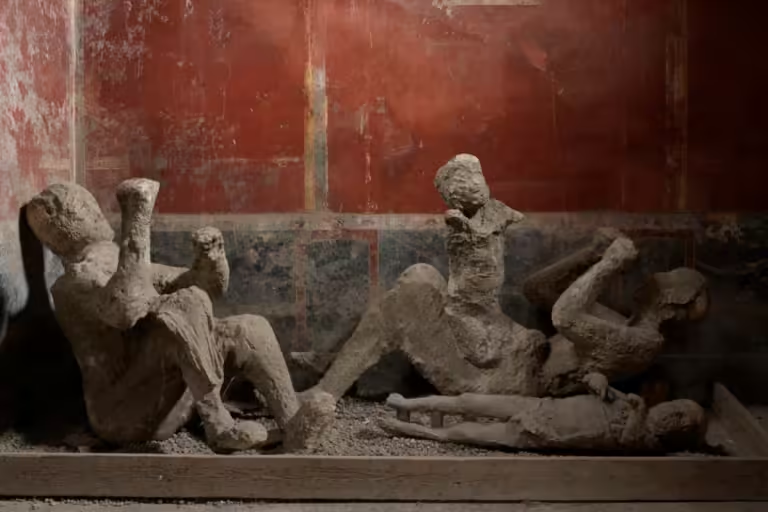
Plaster statues of those who died at Pompeii. DNA testing revealed that the adult on the right was a man unrelated to the young child in his lap.
Pompeii Archaeological Park
Genetic testing has revealed that a plaster cast in Pompeii was not the person it was assumed to be, highlighting how idealized narratives can be projected onto archaeological evidence.
The analysis also revealed that Pompeii’s demographics were also much more complex and diverse than previously thought.
When Mount Vesuvius erupted in 79 AD, several Roman towns were buried, including Pompeii. Many of Pompeii’s inhabitants were completely suffocated by the compressed ash during the eruption, and as their bodies decomposed, cavities formed, perfectly preserving their positions in their final moments.
in 19 yearsth In the century, archaeologists developed a method of pouring plaster into cavities to create lifelike castings. Since then, more than 100 of these castings have been made, preserving the victims’ shapes and bones that have remained undecomposed for centuries.
But it has long been known that many of the plaster statues were manipulated into different poses, sometimes placed together, to add drama to the story of Pompeii, said Valeria of the Archaeological Park of Pompeii in Naples, Italy. Amoretti says.
To learn more about who these people were, Amoretti and colleagues examined 14 plaster casts and extracted DNA from the bones of five of them.
What they discovered completely changed the established interpretation of who they were. It was long believed that an adult wearing a gold bracelet and carrying a child on her lap was the child’s mother. DNA analysis revealed that they were actually adult males and were not biologically related to the child. A nearby person previously interpreted to be the father was also unrelated to the child, who was assumed to be the mother.
Another pair, believed to be sisters or mother and daughter who died in an embrace, also included at least one genetic male, making them unlikely to be related.
Genetic analysis further revealed that the people of Pompeii had a diverse ancestry, including elements related to modern-day Jewish populations in the eastern Mediterranean, the Levant, and North Africa.
Amoretti says it’s no surprise that the Roman world was multicultural and that the Mediterranean Sea and its ports brought people together.
“But discovering the extent of this melting pot, even in an average provincial city like Pompeii, and getting scientific evidence of it from ancient DNA is very interesting,” she says.
Alyssa Mitnik of Harvard University said the study highlights the importance of applying science before interpreting archeology at face value.
“Ultimately, it reminds us that the most intuitive, dramatic, sensational explanations are not always the truth, and encourages us to recognize and question our preconceptions,” she says. .
topic:
(Tag to translate)Archaeology

